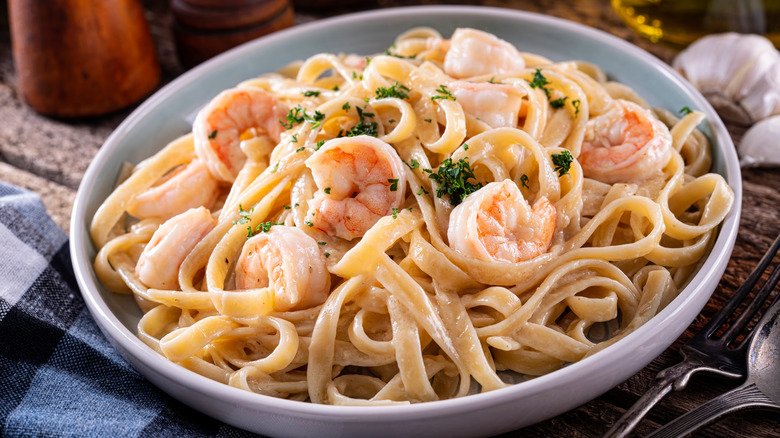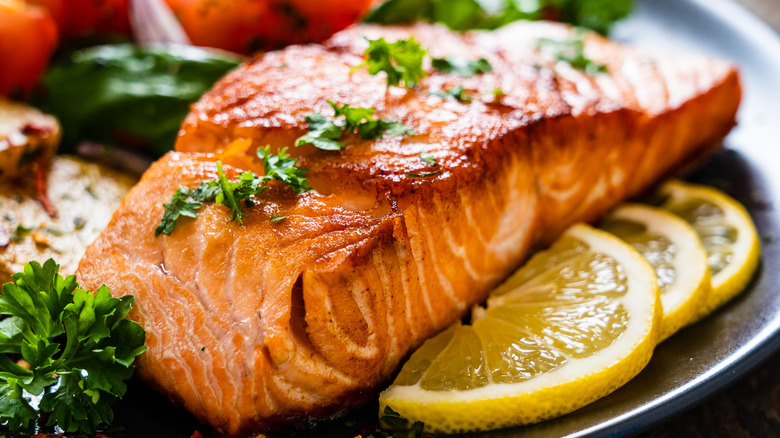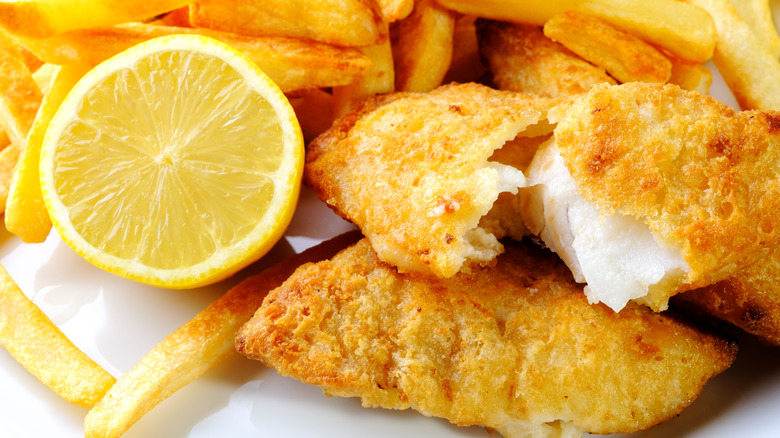Why You'll Want To Pass On Ordering Seafood Carbonara At A Restaurant
If ever you're stuck between ordering a seafood dish and a creamy pasta dish, some restaurants (seemingly) have your back, offering options like seafood carbonara or shrimp alfredo that combine the two — but you may want to think twice before putting that order in. Yes, these kinds of dishes break the cardinal rule of never combining dairy (more specifically, cheese) and seafood, but that's not why you ought to be wary. The real reason is a little more stomach-churning.
A thick, creamy sauce works as a sort of palate bulldozer, masking the taste of more delicately flavored ingredients, seafood among them — and sometimes, restaurants make use of this fact to hawk sub-par seafood. Take it from an expert: "Restaurants have a tendency to use the heavy sauce to disguise lower-quality or scrap seafood," said Priscilla Casey, a private chef and caterer (via Insider). A rich, heavy sauce can make it much harder to sense the fishy smell or off-taste of seafood that's past its prime, and sometimes, that's no accident.
Of course, this isn't always going to be the case, and we're sure that plenty of restaurants serve up perfectly fresh, quality seafood in creamy dishes if you like that sort of thing. But unless you're dining at a restaurant you really trust, you might want to opt for something else.
Keep it simple, seafood
If you're really craving something oceanic, it's generally wisest to look for simpler dishes with ingredients that won't overpower the fish or shellfish at hand. Consider getting a straightforward, grilled, or baked cut of fish. Or, if you really want pasta, keep an eye out for dishes with a lighter preparation — think a citrus or white wine-based sauce with just a touch of butter, if any dairy at all. "If the seafood is fresh, it would be good on its own, it doesn't need heavy flavors and it should be the star of the plate," explains culinary director Dell Leandro (via Eat This, Not That).
It's similar to the reason you'll sometimes hear advice to skip the specials when ordering at a restaurant: It's a clever way to get rid of overstocked, perishable ingredients, some of which may already be nearing their expiration date. And even if that carbonara or alfredo sauce isn't being used to cover the taste or smell of not-so-fresh fish, it could be disguising seafood that's just not particularly high quality, like fare that came frozen. Heavy cream might make bland, watery, or rubbery qualities in seafood less perceptible, but if you're paying restaurant prices, you probably want to be able to taste what you're eating.
Rolling in the deep fryer
Some upsetting news about your Friday fish fry: Heavy breading and deep frying is another way to pass off low-quality seafood as fresher and tastier than it is. Some seafood lovers wouldn't give up their fish and chips if their life depended on it, but again, it's a matter of trusting the kitchen. If your local spot consistently doles out perfectly crispy cod that's full of fresh, not "fishy" flavor, fantastic. But when you're dining out somewhere new and unfamiliar, know that deep frying is a common trick used to get away with serving fish that came to the restaurant frozen without it being completely obvious.
There are virtually endless ways to prepare seafood, and even the heaviest dishes can be delicious if made well, with quality ingredients and a careful hand when it comes to using oil, butter, or cream. But if you're ever unsure about a restaurant's seafood sourcing, maybe opt for something terrestrial instead — or at least, don't pay top dollar for what could be a bottom-shelf product.


